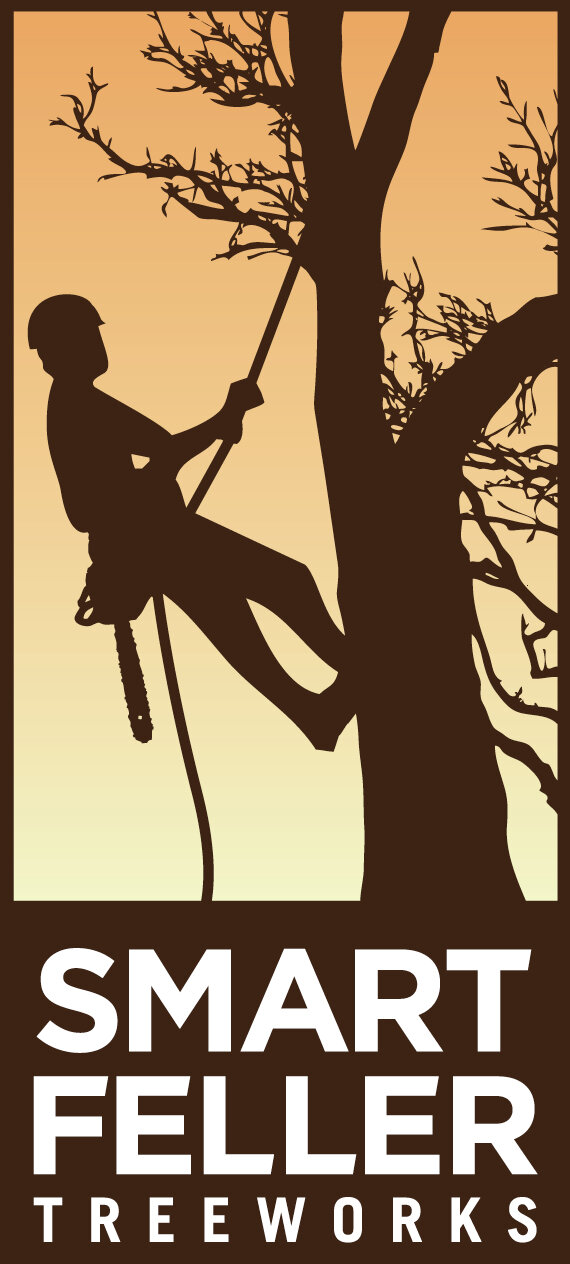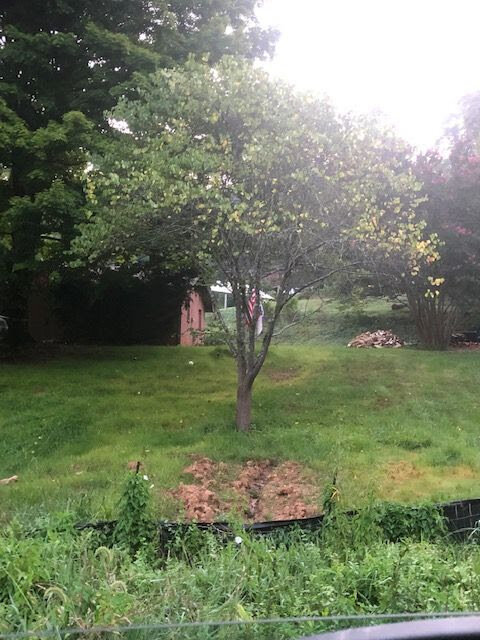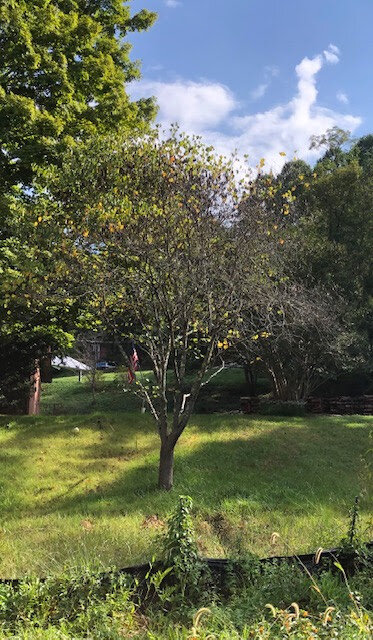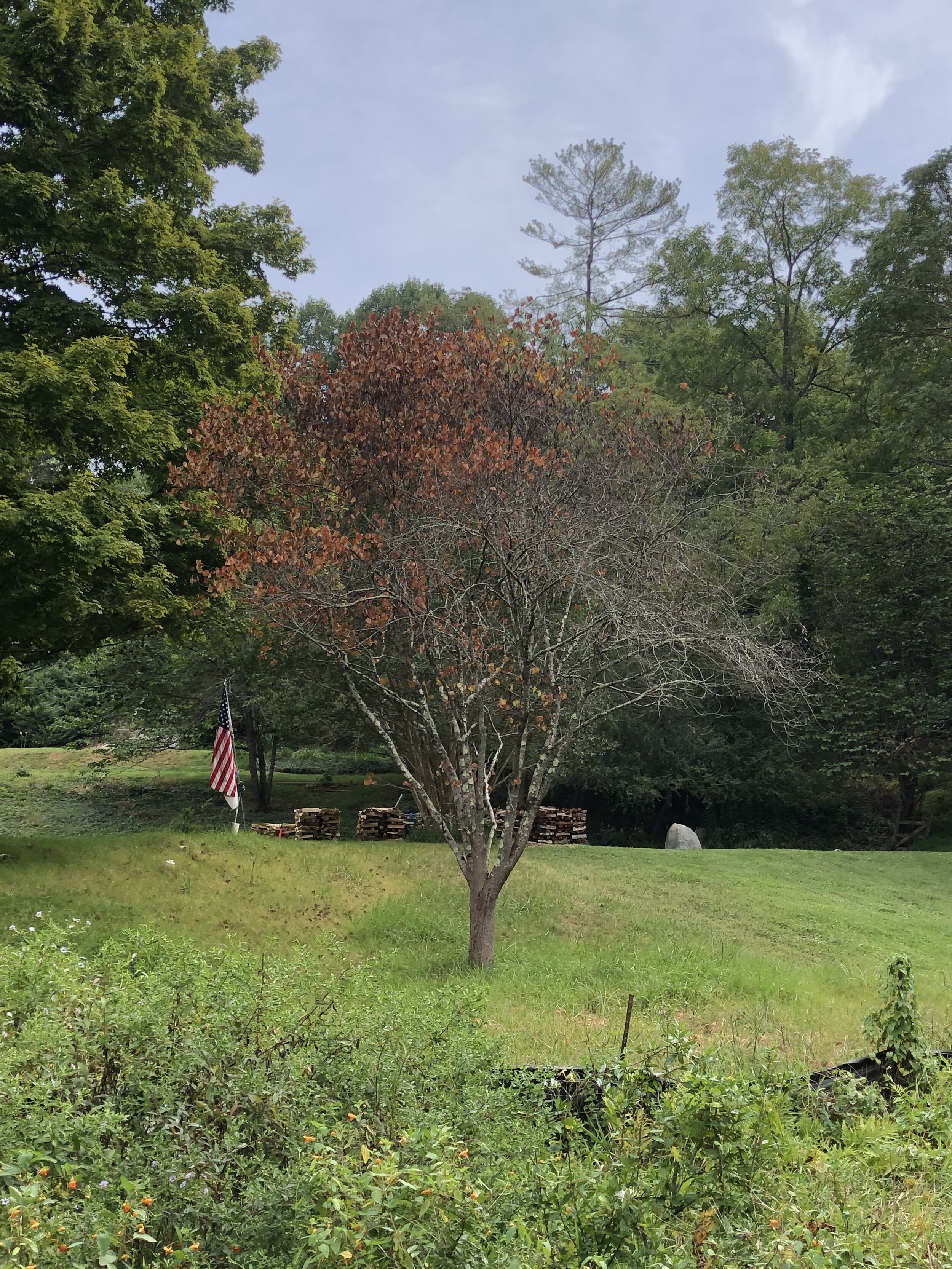How a tree is killed.
On my way home from work, I pass by a Red Bud every day. Last May, it looked as if a new sewer line was being installed. Over the span of ten days, I watched.
I should say that before the heavy equipment even arrived, this Red Bud was pretty stressed, with a sparse canopy and a buried root flare, most likely due to the growing in of a grass lawn. As this tree grew out, the grass pushed up, and over time the root flare, which needs to breathe like all other parts of the plant, was covered. Seeing it through the seasons, I noticed there had been little to no nutrient cycling: no mulch, leaves, etc. for the soil microbiome to eat. Grasses are big competitors with trees: some grasses pump out chemicals to make the soil more conducive to their growth, and those growing conditions are detrimental to most trees. But! This tree had life all the way to the tips of its branches! A good sign, and it had put on several inches of new growth in the past year. Trees do their best with what they’ve got. Just like us.
The first day of May work they excavated a trench above the Red Bud, piling the soil.
The second day is when most of the trauma came to this tree. They spread out the clay-based soil from the excavation all over the Red Bud's root system. This tree's root system, like all trees, can extend well beyond the width of its canopy, and most of the roots are within the first 18" of soil. Any driving, digging, or grade changes should occur at a minimum of the diameter of the trunk at breast-height times five away from the tree on all sides. Adding soil, any amount, to the top of the ground in this area will inhibit the gas exchange that root systems, as well as the wood wide web, need to survive.
Over the next several days, they dug closer and closer to the Red Bud. As the machine approached the tree, the soil was compacted. This will further inhibit gas exchange, as well as decreass pore space in the soil. No oxygen, less space for macroinvertebrates, and no room for water. The first pass of large equipment does most of the compaction, so even one trip alone will damage the tree. The soil will eventually turn anaerobic, and most of the major fungal infections that kill trees in urban environments thrive in anaerobic conditions. Root death will occur, in addition to the death of the millions of microorganisms, fungi, bacteria, and arthropods that need oxygen to survive.
Then this machine compacted the soil even more. Compacted soils cannot absorb water: water will run off the top of this lawn very much like a paved lot. Note the absence of a root flare at the bottom of the tree. Piling this much soil (or mulch) at the tree's root flare will cause fungal infections, girdling roots, suffocating yet another part of the tree that needs to breathe. They have added several inches on top of what was already a buried root flare. At this point I was also not sure if they trenched directly next to the tree.
The finished product above, strawed and seeded. Somehow on their egress they broke a large limb. Removing limbs (intentionally or not) from traumatized trees will further exacerbate the problem. Trees store energy in their limbs and leaves, energy that could be used to cope with stress if the limbs were left alone. Removing limbs opens live tissue wounds that the tree will need to contend with before antagonistic fungi enter the trunk tissue. On large trees, removing limbs affects the way the tree responds to wind loading.
Large trees can take years, even decades to show signs of stress after the damaging event. This small Red Bud, already stressed as it was, has significantly declined in the months since the excavation.
The first two pictures above were taken in August and the last in September. You do not need to take a test from the International Society of Arboriculture to tell you that this tree should not look like this at this point. Even now, in mid-September, go look at a Red Bud: you should find full canopies barely showing signs of fall color. The speed at which this canopy thinned surprised me, as trees store energy in their roots and branches to sustain themselves through troubling times (drought, heat, pandemics, human folly...) — but they can take only so much. This is just one example of what happens to trees all over Asheville, all over the world, every day.
If it this tree was a large White Oak, "it would be fine" for years and years and years, showing a full canopy, green leaves, and acorns underfoot. But trauma is trauma and at some point the tree would run out of energy, unable to cope with the added soil, buried root flare, and anaerobic conditions. The canopy would thin, dead limbs would appear in full sunlight, and mushrooms would fruit at its base, and then an arborist would finally be called.
That call could be too late. The time to call the arborist is before equipment arrives, before someone without tree knowledge or training assures you they will work around the tree and keep it safe, that "It'll be fine!" Take it from this Red Bud. It’s not fine at all.








